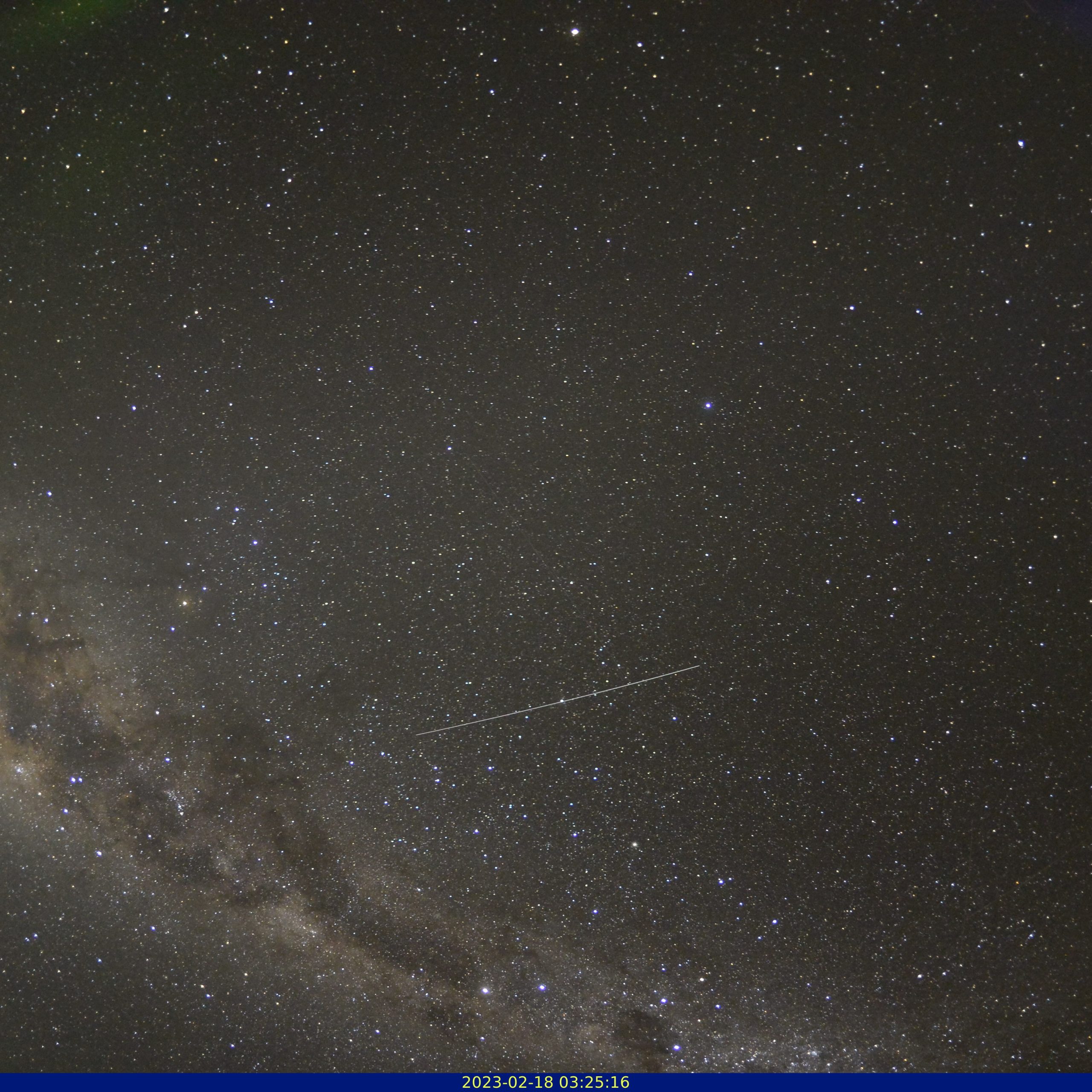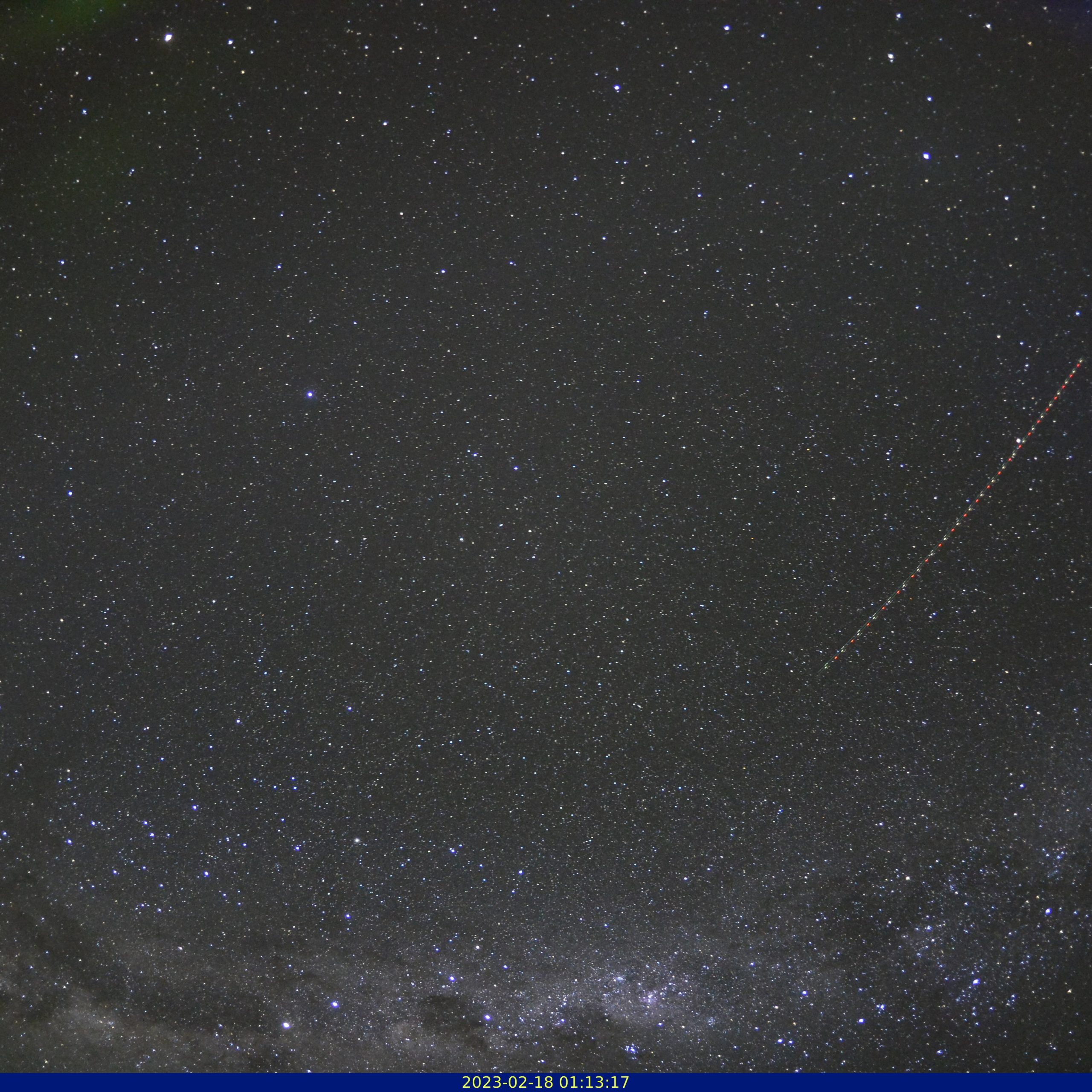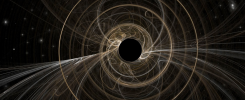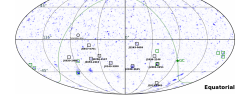June 2023
The H.E.S.S. telescope array is used to study cosmic source that radiate very-high-energy (VHE) gamma rays, electromagnetic radiation whose photons are 1.000.000.000.000 times more energetic than the visible light that we see with our eyes. Such photons, however cannot penetrate the atmosphere. They interact with elementary particles in our atmosphere and create many energetic particles in the process. The newly created particles can also only propagate a short distance through the air before they interact and each generate again further particles. A whole avalanche grows, and the particles within this shower move with relativistic velocities. Particles moving very fast through air emit a flash of visible light (so-called Cherenkov radiation) – very much like supersonic planes generate an acoustic boom when they fly faster than the speed of sound. The faint Cherenkov flashes are recorded with the large H.E.S.S. telescopes and thus allow studies of the original gamma-ray emission in an indirect manner. This technique is very unusual in astronomy: First, because the telescope actually detects photons of a very different energy than those one is actually interested in, and second, because the radiation actually observed has not traveled through the universe but is generated within the atmosphere.
The Cherenkov flashes are difficult to measure. They only last for billionths of a second (and can thus only be measured with very fast cameras) and they are extremely faint (and thus very large telescopes are required to detect the flares). The central CT5 telescope of the H.E.S.S. array is actually the largest telescope on Earth used to measure optical radiation.
Since the H.E.S.S. telescopes measure light generated within the atmosphere it is very helpful to also check for any other changes in the atmosphere while recording gamma rays. Many of these changes can affect the gamma-ray measurements. The H.E.S.S. array hence uses several devices to study the atmosphere. One of them is an all-sky monitor, a camera equipped with a fish-eye lens that instantaneously covers the sky visible for HESS throughout the night and records any visible changes in the atmosphere above the telescopes. H.E.S.S. has been using an all-sky monitor since the installation of the ATOM facility (SOM 2020-05), but a 2022 upgrade has increased the performance significantly.
The primary objective of an all-sky monitor is the continuous recording of the atmospheric transparency. During the dark parts of the night when the moon is below the horizon it is rather difficult to identify and locate light cloud cover. It s more difficult still to track changes and identify the periods when observations get affected by clouds. Even in the Namibian skies, which offer a much larger fraction of cloud-free periods than European skies, continuous monitoring is required.
Fig. 1 illustrates the straightforward identification of clouds that have moved over large fractions of the sky in a very brief period of time and thus allows the observers steering the telescopes to react promptly. While observations are ongoing, the images of the sky are displayed in the H.E.S.S. control room along with an indication of the location in the sky towards which the telescopes are pointing.

If it was possible to slow down the showers generated by the incoming gamma rays a billion times, and if they were many billion times brighter, they would appear similar to the streaks of meteors. True meteors do also show up in the images obtained with the Cherenkov telescopes and are sometimes mistaken for instabilities in the cameras. The all-sky images offer an easy identification of meteors (Fig. 2) and can actually be used for direct studies of meteor showers in addition to their prime objective.

When the HESS telescopes started operations in 2002, meteors where almost the only causes of ‘light streaks’ in the night sky (and in the camera images). The massive increase in communication satellites changes the situation rapidly. Just in the short period between January 2020 and November 2021, the number of satellites that cause tracks across the camera images has doubled. In a few years time, it will be a rare chance to take an images such as those shown in Fig. 1, 2 or 3 without several satellite trails. While the number keeps growing, all-sky photos (such as Fig. 3) allow an identification of trails which can hence be taken into account when analyzing the images taken by Cherenkov cameras of the HESS telescopes.

Still a rare sight in Namibian skies are airplanes – easy to spot and identify by their multi-colored blinking lights (Fig. 4).

The all-sky images are also used to monitor phenomena above the atmosphere – true changes among the stars. While exposure times are kept relatively short in order to monitor the phenomena described above, the images are still sensitive enough to record stars many times fainter than those visible by eye. The all-sky images are sensitive enough, for example, to identify nova outbursts, unpredictable thermonuclear explosions on stars that result in a very fast increase of the brightness of the star (increasing by about 10.000 times over two to three days). In 2021 HESS discovered the first Nova explosion in very-high-energy gamma rays (SOM 2022-04) and monitoring the increasing flux with a delay of two days compared to optical emission). By monitoring the skies, at least the brightest novae can be detected in near real-time (see Fig. 5), increasing the chances of further nova discoveries with HESS.


Fig. 5: A small portion of the sky displaying the field of the night sky where Nova PNV J17224490-4137160 emerged in April 2023. The left hand figure shows the field before the Nova outburst, the right-hand figure was taken the night after the nova detection. At peak, the nova had reached 8th magnitude. While the individual pixels of the all-sky monitor are sensitive to different colors, these images only show measurements with the pixels sensitive to red flux. The red-to-white color coding represents intensity.


